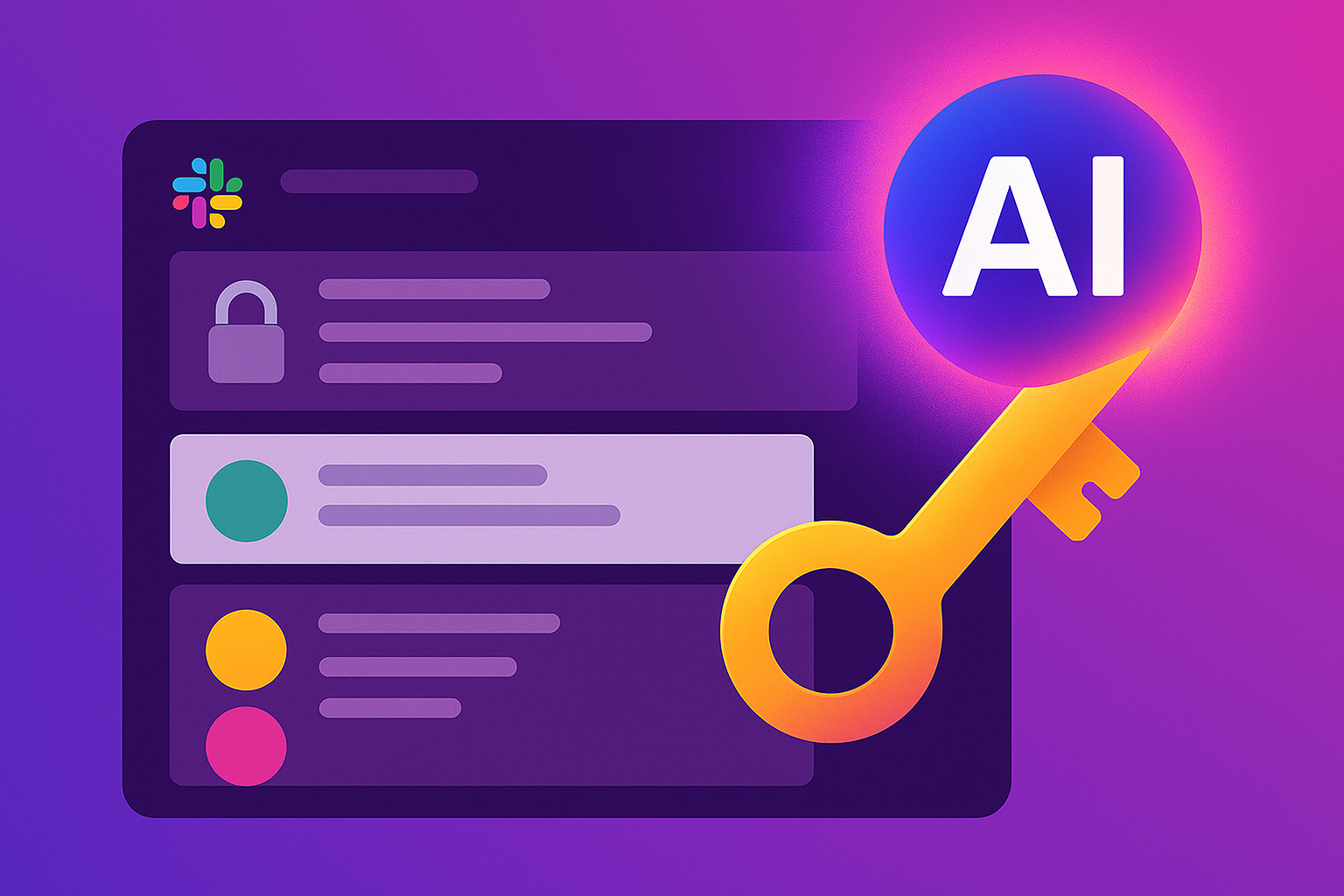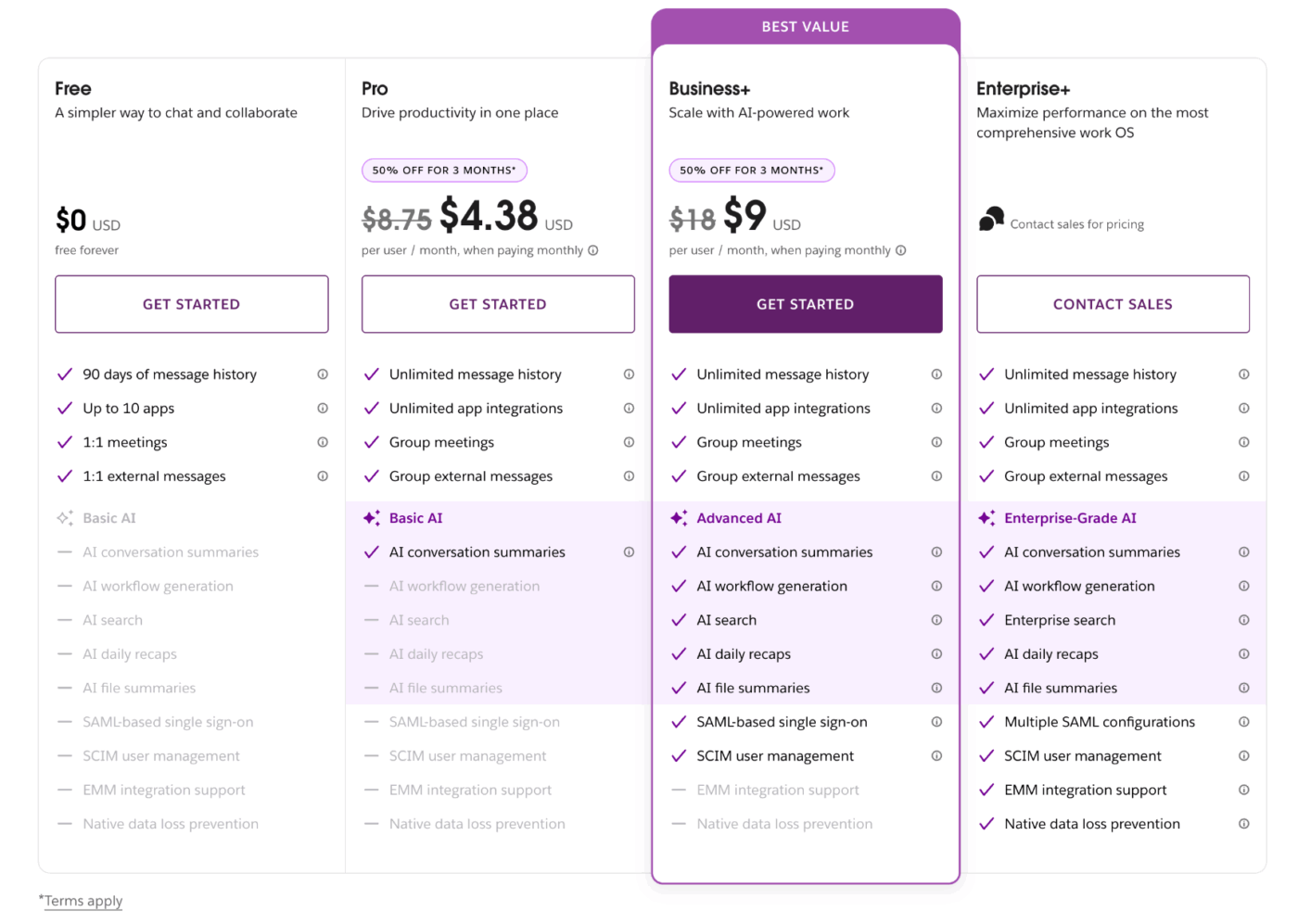An Honest Review of Slack Agentic AI’s Features & Capabilities

Sorry, there were no results found for “”
Sorry, there were no results found for “”
Sorry, there were no results found for “”
Nov 10, 2025
5min read
Sorting through endless Slack threads at 10 p.m., searching for a budget approval buried three channels deep, I realized manual chat archaeology wastes hours every week.
Slack’s new agentic AI tackles that exact pain point by surfacing answers, drafting replies, and automating routine asks without leaving your workspace.
In this guide, you’ll learn what Slack offers, how it works, and whether the investment fits your team’s workflow.
Yes. Slack positions itself as a unified workspace where AI agents and human teams collaborate side by side, treating conversations as the interface for autonomous work.
The company launched this vision through Slack GPT in May 2023, then expanded it at Dreamforce 2025 by announcing its “agentic operating system” strategy.
Salesforce embedded its Agentforce apps for Sales, IT, and HR directly into Slack channels, letting teams ask an agent to pull CRM data or resolve a support ticket through natural language.
The rebuilt Slackbot now acts as a personalized AI companion, while the Channel Expert agent answers questions by searching your company’s conversation history and connected knowledge bases.
This architecture turns Slack from a messaging tool into the conversational front-end for Salesforce data, third-party integrations, and custom AI workflows.
Slack’s agents tap into the conversational context already flowing through the workspace. When someone types a question in a channel or DM, the AI scans relevant threads, connected apps, and Salesforce records to generate an answer in seconds.
A sales rep can ask “What’s the status of the Acme deal?” and Agentforce Sales pulls the latest CRM notes, pipeline stage, and next steps without opening a separate tab.
An IT agent resolves password-reset requests or answers policy questions directly in the channel, drawing from the company’s knowledge base while respecting permissions.
The technical layer runs on Slack’s Real-Time Search API MCP, which give AI systems secure access to chat history, files, and integrated data sources. Third-party LLMs from OpenAI and Anthropic can deliver personalized answers while staying within enterprise access controls.
During a recent sprint-planning call, a product lead asked in the #roadmap channel, “Did we finalize pricing for the Enterprise tier?”
Instead of scrolling back through two weeks of messages, they typed the question into Slack’s AI search bar.
Within three seconds, the Channel Expert surfaced the exact thread where finance confirmed the $550-per-user annual rate, along with links to the pricing deck and legal sign-off.
The underlying process follows a consistent pattern:
That same flow applies whether someone is asking about deal status, resolving a password reset, or tracking down a policy document.
The agent surfaces only what the requester can already see, keeping security intact while cutting response times from minutes to seconds.
Slack connects to the tools teams already use. Einstein GPT pulls live CRM data from Salesforce, so sales reps can ask about deal status or pipeline updates without leaving their channel.
The Slack Marketplace adds AI apps from Anthropic, Google, Perplexity, Dropbox, and Notion, letting those services respond to questions directly in Slack’s interface. Enterprise Search takes this further by scanning across Google Drive, Box, Jira, and Outlook when someone runs a query.
The AI checks both Slack threads and external files, then ranks everything by relevance in one result set. Workflow Builder handles the automation side, passing prompts to OpenAI or Anthropic and posting results back into channels for things like translations or ticket summaries.
| Component | Business Function |
|---|---|
| Slackbot (AI-powered) | Instant answers to routine questions |
| Channel Expert | Contextual recommendations from team knowledge |
| Agentforce apps | CRM updates, ticket resolution, data retrieval |
| Real-Time Search API | Secure, permissioned access to conversation data |
This open ecosystem positions Slack as the glue layer for diverse tools, reducing context switching and surfacing answers wherever the conversation happens.
Early reactions to Slack’s agentic AI reveal a split between enthusiasts and skeptics.
On one hand, power users praise the async workflow and seamless integration. On the other, cost-conscious admins question whether the feature set justifies the price jump.
Here’s what real users posted:
These quotes capture a broader pattern: teams that already rely heavily on Slack and Salesforce see immediate ROI, while lighter users balk at paying enterprise rates for AI they might invoke only a few times per week. As Slack refines its pricing tiers and adds more granular feature controls, sentiment may shift toward the positive.
Slack’s product timeline shows a clear arc from conversational AI to full agentic automation.
In 2023, the company introduced Slack GPT and opened a beta for thread summaries and search answers. By February 2024, those features reached general availability, followed by Business+ and Enterprise+ plan launches in mid-2025.
At Dreamforce in September 2025, Slack debuted its “agentic OS” vision alongside Agentforce apps and developer tools (Real-Time Search API, Model Context Protocol) in closed beta.
Looking ahead, Slack’s Real-Time API is slated for GA in early 2026, enabling production-grade context-aware agents from any developer.
Future updates may include proactive coaching agents, intelligent project-management bots, and richer automation that taps years of conversation data.
Salesforce’s 2025 shift to usage-based AI credits also hints that by 2026, Slack customers might purchase capacity (credits) for agent interactions rather than paying fixed per-user fees.
This flexible model could ease budget pressure and encourage experimentation with custom agents.
Slack’s AI pricing shifted in August 2025 when the company retired its standalone $10-per-user add-on and folded advanced AI into the Business+ plan at $15 per user per month (up from $12.50).
All paid tiers now include basic AI features like conversation summaries and huddle notes, but full capabilities such as AI search answers, channel recaps, file summaries, and translations require Business+ or higher.
The new Enterprise+ plan, which bundles Enterprise Search and deeper Salesforce integrations, carries contact-sales pricing and is often sold as part of broader Salesforce AI Cloud deals.

Compute overhead and integration services add to the total.
Agentforce agents consume API credits, and teams building custom workflows may need developer hours to configure Model Context Protocol connections.
Organizations already on Salesforce’s Agentforce 1 suite ($550 per user annually) receive Slack Enterprise+ access included, which can offset incremental spend.
Legacy customers who purchased the $10 add-on before June 2025 can keep it until their next renewal, but new buyers must adopt the revised plan structure.
© 2025 ClickUp